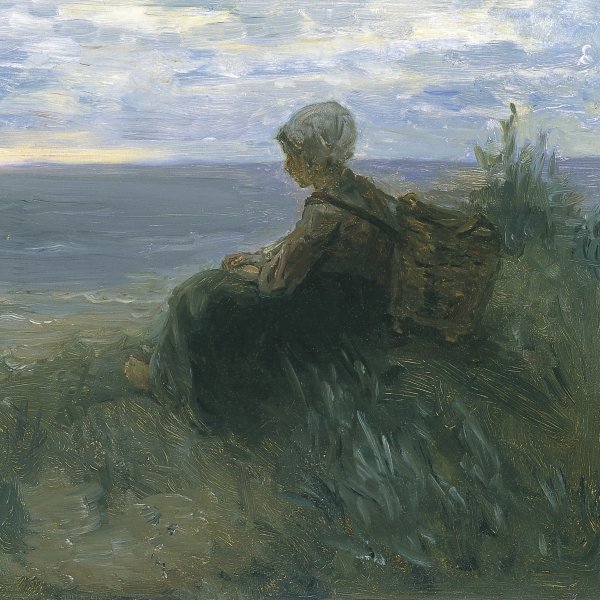Jozef Israëls
Groningen, 1824-Scheveningen, 1911
Jozef Israëls was born on 27 January 1824 in Groningen (The Netherlands). He was a pupil of the Akademie Minerva in Groningen, and continued his artistic education in Amsterdam with teachers such as J. A. Kruseman, a famous portrait painter, and J. Pieneman, a battle painter. In 1845 he went to Paris, first as a student in the atelier of Picot, then under the guidance of Ary Scheffer, a celebrated artist at the court of Louis Philippe. After his return to Holland Jozef Israëls continued his orientation at the Düsseldorf School of Art, where he became acquainted with the fishing genre in the works by Rudolf Jordan. A visit to Barbizon and a confrontation with the paintings and drawings of Jean François Millet convinced him to choose the realistic genre, with the life of farmers and fishermen as his main subject.
In 1875 he was considered one of the leading artists of The Hague School. French critics praised his works as painted with "shadows and grief". His paintings were greatly admired by Vincent van Gogh. Jozef Israëls was a man of great culture, with a keen interest in modern art and literature. He travelled widely, and even wrote a book about his visit to Spain.
His son Isaac Israëls became a painter in his own right. Jozef Israëls lived in The Hague from 1872 until his death in 1911. He was president of the artists' association Pulchri Studio in The Hague, and founding member of the Dutch Watercolour Society in 1876.
At his death in 1911 he was honoured with a personal exhibition at the Biennale in Venice, and with a presentation of his works in the Toledo Museum of Art, Ohio.
John Sillevis
In 1875 he was considered one of the leading artists of The Hague School. French critics praised his works as painted with "shadows and grief". His paintings were greatly admired by Vincent van Gogh. Jozef Israëls was a man of great culture, with a keen interest in modern art and literature. He travelled widely, and even wrote a book about his visit to Spain.
His son Isaac Israëls became a painter in his own right. Jozef Israëls lived in The Hague from 1872 until his death in 1911. He was president of the artists' association Pulchri Studio in The Hague, and founding member of the Dutch Watercolour Society in 1876.
At his death in 1911 he was honoured with a personal exhibition at the Biennale in Venice, and with a presentation of his works in the Toledo Museum of Art, Ohio.
John Sillevis





